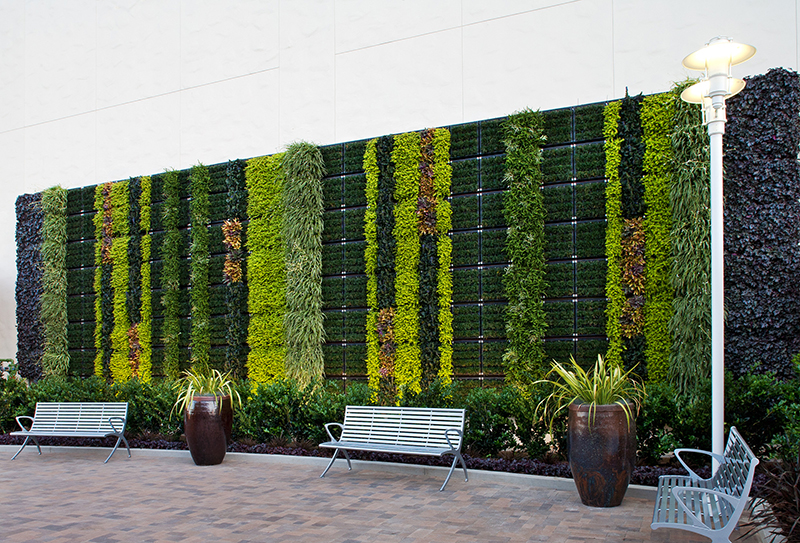Outdoor walls can spring into life with innovative and eye-catching plantings.
Living walls aren’t new (think the legendary Hanging Gardens of Babylon) but they’re certainly enjoying a newfound popularity, according to Jim Mumford, founder of the San Diego-based GreenScaped Buildings, an offshoot of Mumford’s Good Earth Plant Company.
Also known as green, plant or vegetated walls – or vertical gardens – the modern version of living walls began capturing the design world’s attention about 20 years ago with the works of botanical artist Patrick Blanc, whose innovative installations in France and Spain brought this planting style into the mainstream. In the early 1900s, a living wall usually referred to plants and vines growing vertically along a brick wall or trellis. Today’s backdrop, says Mumford, may also include felt, fabric, foam and rock, although Mumford is still partial to traditional soil.
The medium acts as an anchor and the plants – which can range from common house varieties (Mumford’s personal preference is succulents) to edible herbs and flowers – are grown flat off-site, attached to the wall, and then installed. “When it comes to the choice of plants, you can have anything you want if you have the right amount of light and water,” says Mumford.
While the majority of Mumford’s clients are commercial establishments such as restaurants and urban public spaces, there is increasing interest from homeowners who have both the space and the budget. “With prices ranging anywhere from $50 to $150 or more a square foot, these are not inexpensive,” says Mumford. Living walls can exist inside with proper lighting, or outside in almost any climate. They can be planted randomly or have intricate patterns, and they can be watered with a recirculating irrigation system, hard piped with drip irrigation and a drain, or by hand. Once the wall of plants is installed, whether inside or out, it requires the same daily attention as any indoor or outdoor plants to thrive.
Dead leaves need to be pruned, soil regularly fertilized, and plants replaced as needed. But with the correct choice of plants, an efficient water irrigation system, and a watchful eye on things, a living wall can be virtually self-sustaining, says Mumford.
“Whether you decide on a living wall of plants to bring a new design aesthetic to your home or garden, or an edible wall of herbs to incorporate more fresh produce into your meals, the end result is the same,” says Mumford. “You’re creating a work of living art.”


